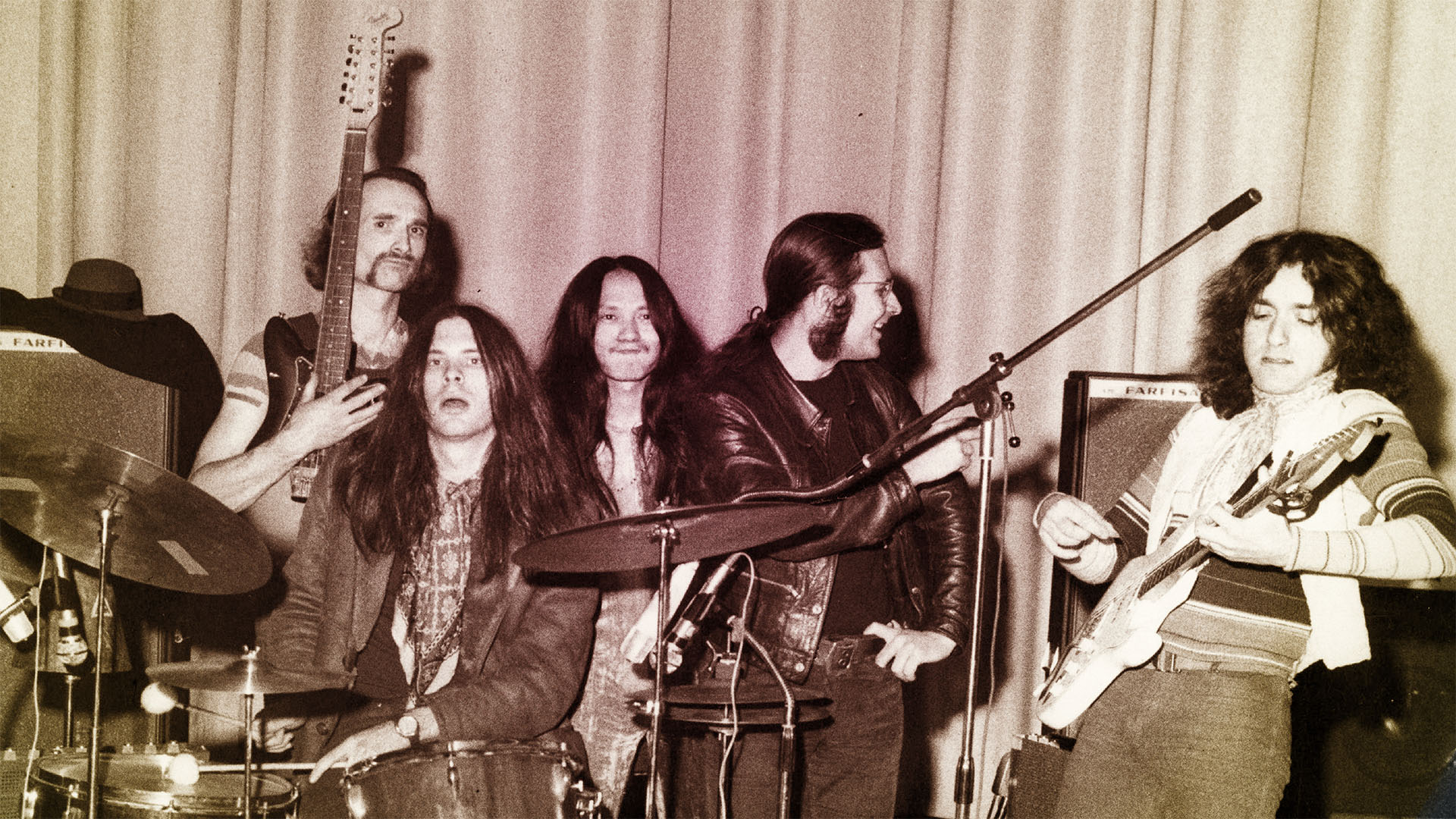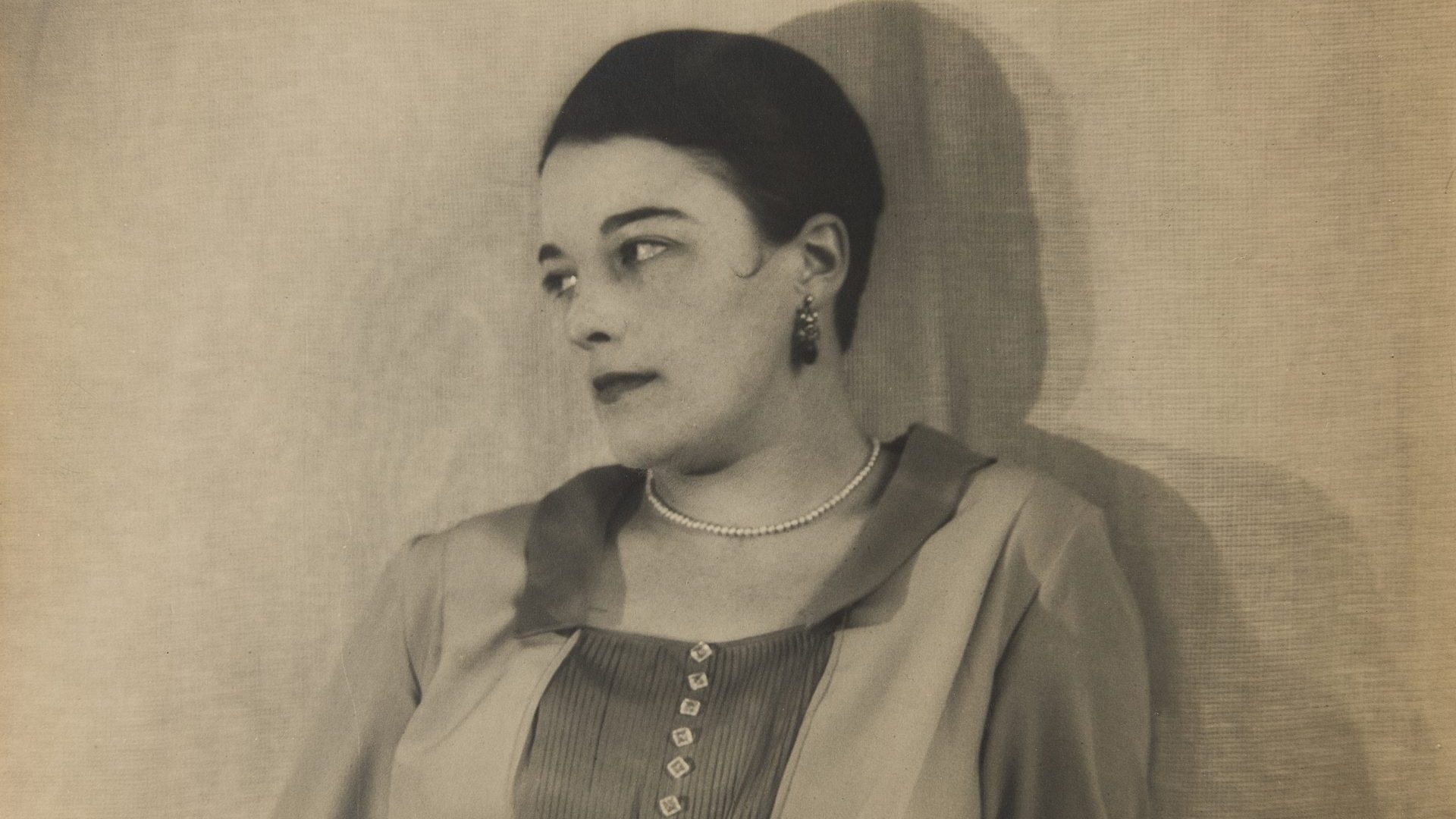“We were each other’s professors,” says keyboardist and composer Irmin Schmidt, founder of revolutionary German band Can, recalling the special alchemy between the musicians he assembled as an experiment to fuse together various strands of 20th-century music.
Schloss Nörvenich, a 14th-century castle southeast of Cologne, was an unlikely setting for such a revolution. Yet Schmidt and the four companions who gathered there in a makeshift studio in 1968 were determined to throw off the old order and create a new culture – one that rejected not only German tradition but would be entirely distinct from mainstream rock in Britain and America.
Underpinned by repetitive, hypnotic rhythms, they forged an uncompromising, challenging new sound, their music bristling with a spirit of anarchy.
These four men, three already in their thirties and from diverse musical backgrounds, created a unique sound collage. Their individual range of influences was vast: modern classical, jazz, rock and minimalism, even funk and world music mixed with European avant-garde, musique concrète and electronics.
They recorded for just 10 years but became one of rock’s most innovative and influential acts, their footprint audible on albums by bands such as Radiohead and The Fall.
Yet Schmidt admits they were far from sure what would emerge from this musical melting pot. Now 87, and the only surviving member of the original four-piece, he says: “The band I founded together with the other three was not a rock band. Actually, my idea was to bring together these different backgrounds and styles and experiences which formed 20th-century music: jazz and rock and electronics and new music and bring it together and see what happens.
“What happened was Can, but it was not planned. Nobody, when we started, had an idea what will happen, what will come out of it, and nobody had an idea what should come out of it. We just spontaneously started saying: let’s see what will happen.”
Schmidt was already an established musician and conductor by 1968, but like bassist Holger Czukay, he had been a student of avant-garde composer Karlheinz Stockhausen at Cologne’s Rheinische Musikschule. Indeed, Can’s groundbreaking approach to music chimed with Stockhausen’s own post-war philosophy: “The cities have been erased, and one can start from scratch without considering ruins and tasteless remains”.
Schmidt tells me another key ingredient helped shape Can’s freeform sound: “[Our] musical experience was very important. Because Can anyway was a collage of different styles [of] new musics. Like jazz was new in the 20th century, and my experience was as a student of Stockhausen and the practice of performing [the works of John] Cage and all this stuff. So, I brought that into Can. You can trace it. You can hear it.
“My experience as a conductor, and my being at home in Schumann, Brahms and Stravinsky is something I brought into Can. No other of Can had this. But [it was] the same thing with jazz with Jaki. So, that was the main thing about Can, bringing this together.”
Born in Berlin in 1937, Schmidt was deeply affected by growing up in a country devastated by bombing. In All Gates Open, the definitive history he co-authored with Rob Young, he spoke of the catastrophe of war being the black heart of the music he made in Can, “a refusal of the blank optimism of the immediate post-war period”.
His teenage years saw him “obsessively furious” over his homeland’s recent history, railing at his teachers’ Nazi past and his own family’s support for the regime.
Schmidt’s musical horizons broadened during a 1966 trip to New York. Ostensibly there for a conducting competition, he discovered instead the city’s flourishing art scene and hung out with pioneers of minimalism, Steve Reich and Terry Riley. Fascinated by the possibilities created by tape loops, drones, feedback and ambient sound, Schmidt admits in All Gates Open, he became entranced and “got corrupted”.
Czukay experienced a similar musical epiphany. Cutting a more extrovert, eccentric figure, he was born in 1938 in modern-day Gdańsk, his family expelled after the war. An early pioneer of sampling, his fascination with electricity, radios, speakers and spatial depth grew while working at a repair shop where he became familiar with the rudiments of electrical engineering, something which later proved invaluable when he set up Can’s recording studio and acted as the band’s tape editor and recording engineer.
By the mid-1960s Czukay was teaching in Switzerland where one of his students, a young Michael Karoli, opened his eyes to what rock music could be. Pupil became teacher as Karoli introduced Czukay to The Beatles’ I Am The Walrus with its use of AM radio samples, as well as other experimental works, notably by the Velvet Underground.
When Schmidt, excited by what he had discovered in New York, called Czukay, inviting him to form a group, his old friend arrived in Cologne with Karoli in tow. Born in 1948 in Bavaria before moving to Switzerland, Karoli had played in numerous jazz and dance bands and became Can’s youngest member and guitarist.
Completing the original line-up was Jaki Liebezeit. Born in 1938 in Saxony, he grew up in poverty, his family refugees after the Soviet occupation of East Germany. By the mid-1960s, he was part of The Manfred Schoof Quintet, early exponents of European free jazz. Liebezeit though was looking to take a different approach:
Offered rent-free by an art collector friend, Schloss Nörvenich proved essential, affording them the opportunity to experiment and jam for days at a time, Czukay working his magic piecing together tracks from hundreds of hours of recording. Nothing was written in advance.
Schmidt is talking to promote the archive release Can Live in Keele 1977. It is part of an excellent series of live releases, mostly from the band’s final years when they had adopted multitrack recording techniques.
But when Can started work in 1968, facilities were much more rudimentary with just two basic Revox two-track tape machines. The huge entrance hall and upper hallway provided excellent reverb though.
Recalling these studio sessions, Schmidt says: “In the beginning, it was always two-track. So, there was only a chance to do one overdub. It actually formed the group very much, because recording meant that what you heard by playing was already the mix, because you couldn’t mix afterwards.
“There was lots of improvising, but improvising was always the search for a certain form, for a certain groove on which you could base a piece. Once, by improvising, all of a sudden it came together, and there was found a groove which worked for all of us together, then we took it. Sometimes by playing this again and again, it got nearer to what it could be. Then we cut out the pieces and glued them together.”
Unlike many of their German contemporaries, Can played without synthesisers until their final records, applying a ring modulator to Schmidth’s piano and organ which created unusual sounds rather than the endless possibilities offered by synths. Their work was more interesting and creative because of these limitations, Karoli later argued.
An electrifying vocalist, American poet and artist Malcolm Mooney was the final piece in the jigsaw. Czukay is quoted in All Gates Open recalling the recording of Father Cannot Yell, the opening track on Can’s cult debut album Monster Movie: “Can wasn’t sure yet which way musically to go till Malcolm jumped one day to the microphone and pushed us into A RHYTHM.”
All Gates Open charts Mooney’s subsequent mental health struggles and subsequent return to the United States. Into his shoes stepped Damo Suzuki, a young Japanese traveller who Czukay and Liebezeit discovered busking outside a café in Munich and whose unique, improvised vocal style combined words drawn from Japanese, German and English.
Schmidt expands on their use of vocals: “We did quite a lot without a vocalist, and it worked as well. The main thing was both vocalists, especially Damo, who did most of the successful records with us… the vocalist was much more an instrumentalist, using the voice as an instrument.”
Compositions for often obscure movies played an important role during Can’s early years, some collected on 1970’s eclectic Soundtracks.
There was an economic necessity to this work, says Schmidt: “Some of the pieces actually existed before, and were [then] used for the title song, for example, of a film. But especially in the beginning, [it] had also an economic reason, because we needed to exist. You need money and that was the only way to earn some money.
“So, most of the film musics Can did were in the first half of our existence, because then we made tours and the records got more successful. Then we could live from what we did, and we did much less film music.”
Their breakthrough came with 1971’s extraordinary double album Tago Mago which earned a sizeable cult following and critical acclaim in Britain and France.
Its first two sides comprise psychedelic, bluesy rock with a jazz aesthetic and a smattering of funk. The album then takes a dramatically different turn. The musique concrète soundscape of Aumgn is Tago Mago’s avant garde centrepiece. Across its 17 minutes, it incorporates sonic experimentation mixed with random snapshots of life at Schloss Nörvenich, from a dog barking to a child shouting.
“We were aware we were making something special,” says Schmidt. “We didn’t care if it would be successful. Of course, you hope, but we did not compromise with any kind of business idea. We just did what we thought is our music, and Tago Mago really was a big step. It still is the most successful record.”
Tiring of the castle’s limitations, Can set up their own studio in an old cinema in Weilerswist south of Cologne, 1,500 ex-military mattresses nailed to the walls as soundproofing. It was here they recorded Spoon, an unexpected top 10 single when used as the theme to the hit German television drama Das Messer.
It led to a Goldene Europa TV award in recognition of Can’s soundtrack work, while follow-up single Vitamin C appeared on the soundtrack of a 1973 film and continue to pop up in movies like Inherent Vice (2014) and The Gentlemen (2019), plus TV shows Euphoria (2019) and Eric (2024).
Can played a landmark free concert at Kölner Sporthalle in Cologne in February 1972, attended by 10,000 people. Fronted by an animated Suzuki in a luminescent red, flared jumpsuit but with no money for an expensive stage set, the band instead embraced the bizarre, showing off their humour by recruiting comedic juggler Fred Ray and a troupe of acrobats to provide circus style entertainment.
“That show was fun,” says Schmidt. “We had just had this hit Spoon, so the concert was free, a kind of thank you to our public. It was a funny concept. We didn’t have the means to make some spectacular show, so we did something… with very simple but funny means, and the public liked it.”
Improvisation was a key part of Can’s performances, and the recent collection of live albums recorded from 1973 to 1977 offers a very different perspective. Familiar themes, riffs and motifs ripple through the jams, but they are often only fleeting. Largely though, the live work is its own separate canon which showed Can going to even more extremes, the remarkable musical telepathy between its members evident.
“We wanted to invent spontaneously on stage,” says Schmidt. “And if you start to do that, the first rule is, listen to the other. Every year it worked better. So, we grew together. In the first three years it was a process of learning to invent on stage, to take the risk. We took the risk from the first moment, but it didn’t work just like this. We had to get into that process.
“I don’t talk much about improvisation because most of the time, we just invented new pieces. It was not improvising about a given scheme, about [a] theme, about pre-existing structure. It was just really inventing something new.
“But sometimes, especially in Keele at the very end of our time, we more often played even recognisably existing pieces and then started getting out of it and using the groove and doing something new on it.”
Eye Bamyasi, (1972), featuring both Spoon and Vitamin C, found the band enjoying life in their new environment at Weilerswist, while 1973’s Future Days was one of the earliest examples of ambient music and the final album recorded with Suzuki, who got married and joined the Jehovah’s Witness faith. Czukay described his departure as “a powerful fist strike into one’s stomach”.
Soon Over Babaluma (1974) leaned into ambient sounds again, Rolling Stone calling Chain Reaction the precursor to 1990s techno.
In 1975 Can obtained their first 16-track recorder, with Landed their first album to be professionally mixed as part of a deal with Virgin, Melody Maker dubbing them “the most advanced rock unit on the planet”. They gave a memorable performance on the BBC’s Old Grey Whistle Test, Schmidt with luxuriant sideburns, a chain-mail waistcoat over his leathers, showing off his trademark karate chop style of playing.
Despite the new technology though, Czukay later described the arrival of multitrack as the beginning of the end; the band no longer recording together as a unit. 1976’s Flow Motion took another left turn, drawing influence from disco and reggae, I Want More earning them an unlikely UK chart hit and an appearance on Top Of The Pops.
By the time they appeared at Keele to promote 1977’s Saw Delight Czukay had retired from bass duties and was instead experimenting with a shortwave radio receiver, while ex-Traffic rhythm duo Rosko Gee and Reebop Kwaku Baah bolstered the rhythm section.
Although Saw Delight had been poorly received, the long-awaited recording of Live At Keele 1977 is the most requested performance since the live series began. It reveals a dynamic show which Jennifer Lucy Allan’s accompanying sleeve notes declare: “On paper, unremarkable. In practice, a precious hunk of sonic material.”
Their legacy now assured with post-punk bands citing Can as a major influence, two final studio albums followed in 1978 and 1979 before one final reunion album ten years later with Mooney returning on vocals.
Schmidt relocated to Provence where he established a studio and among projects composed scores for 80 films, some collected together on Anthology: Soundtracks, which he views as important as any of his other works. Karoli passed away in 2001, followed by Liebzeit and Czukay in 2017, then Suzuki in February 2024.
But both in terms of their remarkable recorded legacy and their continuing influence, Can do what they did in Schloss Nörvenich – they go on and on, endlessly repeating, always pushing forward.
The world continues to listen to Can. But, says Schmidt, their secret was “listening to each other, which is a kind of education. So, everybody continued his music studies in Can with everybody else being his professor.”
Can Live in Keele 1977 and other newly restored live albums are released on double vinyl, CD and digitally via Mute / Future Days



